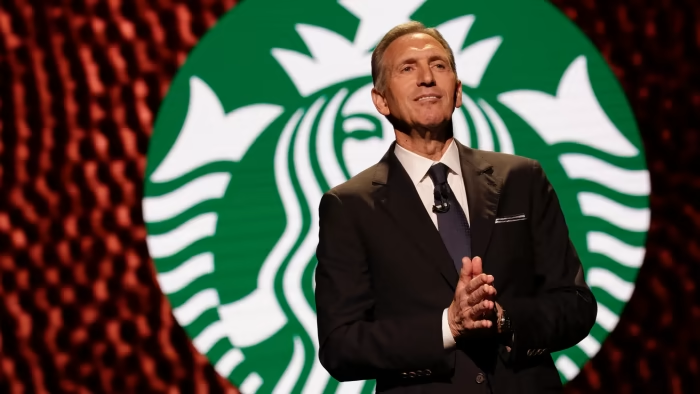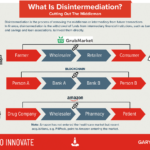The Starbucks business model has become a globally recognised symbol for how people experience and enjoy their daily cup of coffee.
With its inviting atmosphere, high-quality products, and commitment to customer service, Starbucks has become a beloved brand worldwide.
In this article, I examine the business model that has made it a true icon in the coffee industry.
Table of Contents
How Many Stores Does Starbucks Operate?
As of 2024, Starbucks operates over 38,000 stores worldwide, spread across more than 80 countries, with the United States and China being the largest markets.

How Does Starbucks’ Business Work?
Starbucks is a global retailer of high-quality coffee, tea, and other beverages and also provides a selection of fresh food items.
The company’s business model is focused on providing its customers with a unique “Starbucks Experience“, which includes a welcoming atmosphere, friendly service, and a sense of community.
Starbucks generates revenue through company-operated stores, licensed stores, and consumer-packaged goods sold through various channels.
Key Facts About Starbucks
Starbucks
Jerry Baldwin, Zev Siegl, and Gordon Bowker
March 1971 – first store opening
1971
Howard Schultz
Seattle, Washington, USA
SBUX
$29.46 billion (2023)
$4.12 billion (2023)
$96.14 billion (April 2024)
Useful Links for Starbucks
A Brief History of Starbucks

Starbucks was founded in 1971 by Jerry Baldwin, Zev Siegl, and Gordon Bowker in Seattle, Washington.
Initially, the company focused on selling high-quality coffee beans, tea, and spices.
In 1981, Howard Schultz joined Starbucks as Director of Marketing, and after a trip to Italy, he became inspired by the Italian coffee bar culture. Schultz convinced the founders to test the coffeehouse concept, and the first Starbucks Caffe Latte was served in 1984.
Key milestones in Starbucks’ history include:

- 1987: Howard Schultz acquires Starbucks with the help of local investors, becoming CEO and Chairman
- 1992: Starbucks goes public on the NASDAQ stock exchange
- 1996: Starbucks opens its first international store in Tokyo, Japan
- 2001: Starbucks introduces the Starbucks Card, a reloadable stored-value card
- 2008: Starbucks acquires the Coffee Equipment Company and launches the Clover brewing system
- 2011: Starbucks expands its product offerings with the acquisition of Evolution Fresh and launch of Starbucks K-Cups
- 2018: Starbucks opens its largest store to date, the Starbucks Reserve Roastery in Shanghai, China
Who Owns Starbucks?
Starbucks is a publicly traded company, with shares listed on the NASDAQ stock exchange under the ticker symbol SBUX.
As of 2021, the company’s largest individual shareholder is Howard Schultz, the interim CEO.
The remaining shares are held by institutional investors and the general public. Starbucks’s market capitalization is over $130 billion, making it one of the most valuable restaurant brands in the world.
Starbucks Mission Statement
Starbucks’ mission statement is “To inspire and nurture the human spirit – one person, one cup, and one neighborhood at a time“
How Starbucks Works
The Starbucks business model is built upon providing a premium coffeehouse experience to its customers. The company achieves this through several key strategies:
- High-quality products: Starbucks sources the finest coffee beans from around the world and maintains strict quality control standards throughout the supply chain.
- Inviting store atmosphere: Starbucks stores are designed to provide a warm, welcoming environment that encourages customers to stay and socialize.
- Exceptional customer service: Starbucks invests heavily in employee training to ensure that baristas deliver friendly, knowledgeable, and efficient service.
- Product innovation: Starbucks continuously introduces new beverages, food items, and seasonal offerings to keep its menu fresh and exciting.
- Digital engagement: Starbucks leverages its mobile app and loyalty program to enhance customer convenience, personalize experiences, and drive repeat visits.
- Global expansion: Starbucks has successfully expanded its presence worldwide through a combination of company-operated and licensed stores, adapting to local tastes and preferences.
- Social responsibility: Starbucks is committed to ethical sourcing, environmental sustainability, and community involvement, which resonates with its socially-conscious customer base.
Starbucks’ focus on creating a unique and personalized customer experience, its high-quality products, and its commitment to social responsibility have helped the company build a loyal customer base. The company’s ability to adapt to changing consumer preferences and embrace digital technologies has also contributed to its ongoing success.
The Revenue Model of Starbucks
In the 2023 financial year, Starbucks generated most of its global revenue from beverage sales, amounting to $21.68 billion. In contrast, revenue from food products reached $6.59 billion.

The Starbucks revenue model consists of:
- Company-operated stores: Sales from Starbucks-owned and operated stores account for most of the company’s revenue.
- Licensed stores: Starbucks receives royalties and product sales from licensed stores operated by third parties, such as those in airports, hotels, and grocery stores.
- Consumer-packaged goods: Starbucks earns revenue from selling packaged coffee, tea, and ready-to-drink beverages through grocery stores, warehouse clubs, and online retailers.
- Foodservice: Starbucks supplies coffee and other products to food service customers, such as restaurants, universities, and airlines.
- Other revenue: This includes sales from the Starbucks Reserve Roastery and Tasting Rooms and revenue from the company’s mobile app and loyalty program.
How does Starbucks make money?
Starbucks’ focus on high-quality products sold through retail stores and other channels, exceptional customer service, and global expansion have allowed the company to maintain strong profitability and growth over the years.
| Year | Revenue (in billions USD) | Profit (in billions USD) |
| 2023 | 35.5 | 4.5 |
| 2022 | 32.2 | 4.6 |
| 2021 | 29.1 | 4.2 |
| 2020 | 23.5 | 0.9 (note: covid) |
| 2019 | 26.5 | 3.6 |
| 2018 | 24.7 | 4 |
| 2017 | 22.4 | 4.1 |
| 2016 | 21.3 | 4.2 |
| 2015 | 19.2 | 3.6 |
| 2014 | 16.4 | 3.2 |
What is Starbucks’ Business?
The Starbucks business model focuses on operating speciality coffee shops in the coffeehouse sector of the food and beverage industry. The company differentiates itself from competitors by offering a premium, personalized coffeehouse experience, high-quality products, and a strong brand identity. Starbucks’ competitive advantages include its global scale, brand loyalty, product innovation, and digital capabilities.
Key Features of Starbucks’ Business Model
- Premium coffeehouse experience: Providing a welcoming atmosphere, exceptional service, and high-quality products
- Product innovation: Continuously introducing new beverages, food items, and seasonal offerings
- Global expansion: Growing through a mix of company-operated and licensed stores worldwide
- Digital engagement: Leveraging mobile app and loyalty program to enhance customer experience and drive sales
The Starbucks Business Model


Customer Segments
The Starbucks business model caters to a diverse range of customer segments. These segments are crucial for the company’s success and growth. The following are Starbucks’ key customer segments:

Value Propositions
The Starbucks business model value proposition offers unique benefits to its customer segments that set it apart from competitors. Starbucks’ primary value propositions include:

Channels
The Starbucks business model takes an omnichannel channel approach within its business model. These channels are essential for delivering the company’s value propositions and engaging with customers. The following are Starbucks’ main channels:

Customer Relationships
The Starbucks business model establishes and maintains strong customer relationships. These relationships foster loyalty, encourage repeat visits, and contribute to the company’s overall success. Starbucks’ customer relationships include:

Key Activities
Starbucks performs key activities to create and deliver its value propositions. These activities are essential for the company’s business model and ensure smooth operations. Starbucks’ key activities include:

Key Resources
The Starbucks business model relies on key resources to create and deliver its value propositions. These resources are crucial for the company’s business model and contribute to its competitive advantage. Starbucks’ key resources include:

Key Partners
Starbucks collaborates with key partners to create and deliver its value propositions. These partnerships are crucial for the company’s business model and contribute to its success. Starbucks’ key partners include:

Revenue Streams
The Starbucks revenue model generates various streams. These revenue streams are essential for the company’s financial sustainability and growth. Starbucks’ main revenue streams include:

Cost Structure
Starbucks’ cost structure consists of the main costs incurred within its business model. These costs are essential for the company’s operations and profitability. Starbucks’ key costs include:
The Future of Starbucks Business Model
The company’s focus on high-quality products, personalized customer experiences, and digital innovation will continue to drive its success.
Starbucks’ commitment to sustainability and ethical sourcing will remain a key differentiator, appealing to socially conscious consumers.
The company’s expansion into new markets through company-operated and licensed stores will provide further growth opportunities.
Related Business Model Patterns
Starbuck’s business model and some of its main business model patterns.





